Download PDF
Download page W1 - Introduction to the Deficit and Constant Loss Workshop.
W1 - Introduction to the Deficit and Constant Loss Workshop
Precipitation Losses
Precipitation losses to surface components involve the interaction of multiple processes at different scales. The most basic process is infiltration of water into an ideal soil with uniform properties and infinite depth. Initially, the soil is assumed to be uniformly saturated. Once precipitation begins, water is infiltrated until rainfall exceeds the infiltration capacity of the soil. At this point, excess precipitation is formed on the surface and subject to direct runoff computations. As the volume of infiltrated water increases, the infiltration capacity decreases to a minimum rate which is equivalent to the soil’s saturated hydraulic conductivity, as shown in the following figure.
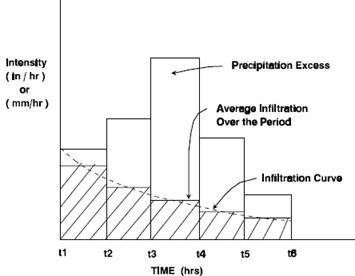
The flow of water in either saturated or unsaturated soil can almost always be described by Darcy's Law. It is a basic relationship that states the vertical flow of water is proportional to the potential gradient. When the spatial coordinate is taken as zero at the soil surface and measured downward, Darcy's Law can be stated in the following form:
v=-K\left(\frac{d \psi}{d z}-1\right)
where ν is the flow per unit area, ψ is the matric potential (a negative value), z is the spatial coordinate (measured positive downward), and K is the hydraulic conductivity. If the soil is saturated, then K is the saturated hydraulic conductivity and is a function of the soil properties and the water properties. For unsaturated conditions the conductivity is still a function of soil and water properties, but is additionally a function of the matric potential. As the water content decreases from saturated toward the residual content, the matric potential becomes increasingly negative. The relationship between conductivity and matric potential is nonlinear resulting in the magnitude of the conductivity varying by several orders of magnitude over the possible range of water content. Darcy's Law is part of the derivation of all physically based models of infiltration and is also used on many conceptual models.
However, not all precipitation losses are due to soil infiltration alone. Interception of precipitation by a vegetation canopy or surface depressions (ponding) can reduce the amount of precipitation that will either runoff or be infiltrated. Also, once water is in the soil, a portion that was infiltrated may return to the atmosphere through evapotranspiration. Users are directed to the HEC-HMS documentation for further information regarding the available canopy and surface methods.
Overview
In this workshop, you will become familiar with the Deficit and Constant loss method that is available within HEC-HMS. Specifically, you will:
- Estimate initial parameter values throughout the study area using GIS information.
- Enter the initial parameter values within a basin model and compute the simulation.
- Calibrate the initial parameter values to achieve a better fit to the observed data.
Questions will be provided throughout the workshop.
Background
In this workshop, the study area is designated as the Middle Fork American River watershed upstream of the French Meadows Reservoir near Foresthill, CA. The Middle Fork American River is part of the American River watershed and is located in central California, as shown in the following figure.
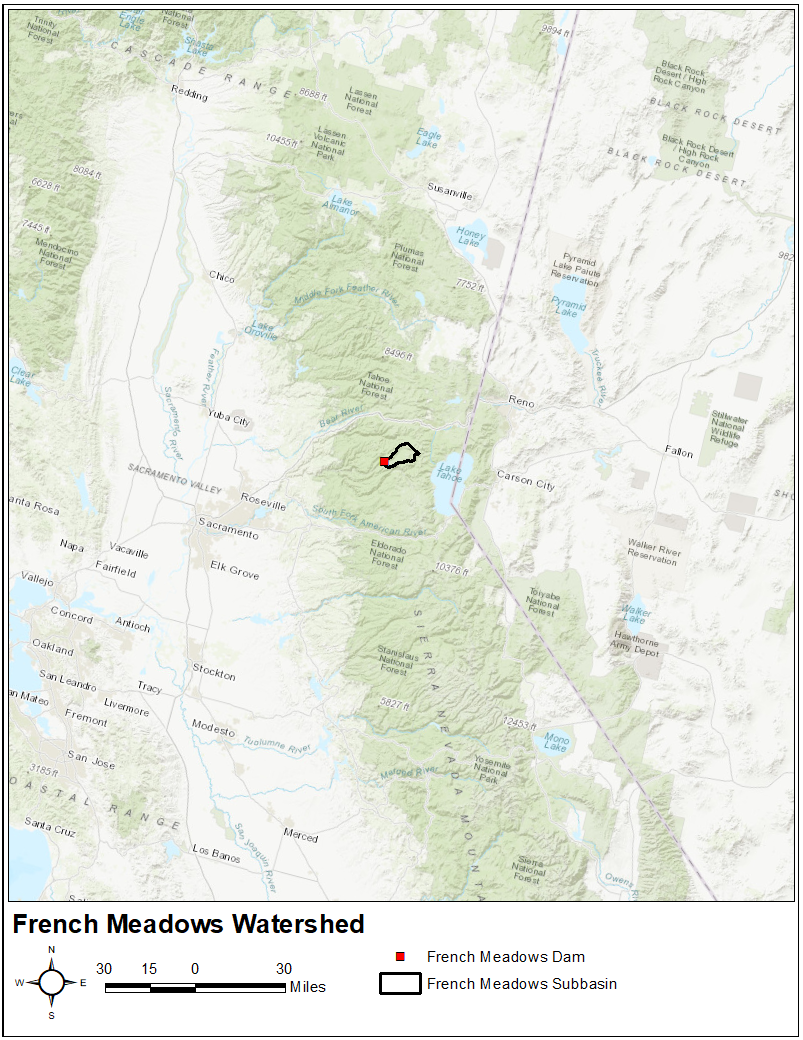
The drainage area upstream of French Meadows Reservoir is approximately 47 sq. mi. Elevations within the study area range from approximately 4250 ft to 9000 ft as referenced to the North American Vertical Datum of 1988 (NAVD88), as shown in the following figure.
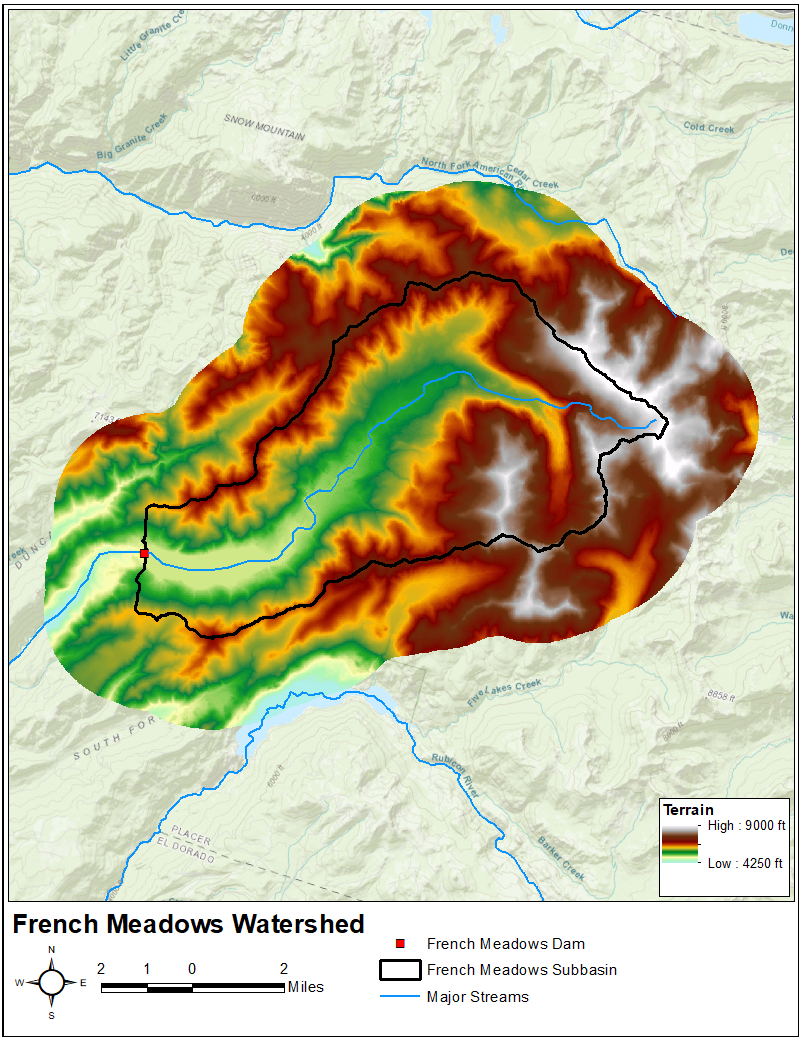
Data
A 10-day time period in late December 1996 - early January 1997 will be simulated within this workshop. During this time period, a major flood due to large amounts of precipitation, higher than normal temperatures, and melting snow occurred throughout California, Nevada, and other states in the Pacific northwest. Total damages during this flood event were estimated at nearly $2 billion.
Precipitation, Temperature, and Snow Water Equivalent
Analysis of Period of Record for Calibration (AORC) gridded precipitation and temperatures will be used as the boundary conditions within this workshop. The AORC gridded dataset has a native spatial resolution of 4 kilometer x 4 kilometer and a time step of 1 hour. University of Arizona Snow Water Equivalent (UofA SWE) data will be used as an initial condition within this workshop. The UofA SWE data has a native spatial resolution of 4 kilometer x 4 kilometer and a time step of 1 day. The raw precipitation, temperature, and SWE data files were ingested, projected, and output in DSS format using tools within HEC-HMS.
Reservoir and Streamflow Data
An elevation-storage and elevation-discharge relationship for French Meadows Reservoir was derived using observed data from the U.S. Geological Survey (USGS) and is shown in the following figures.
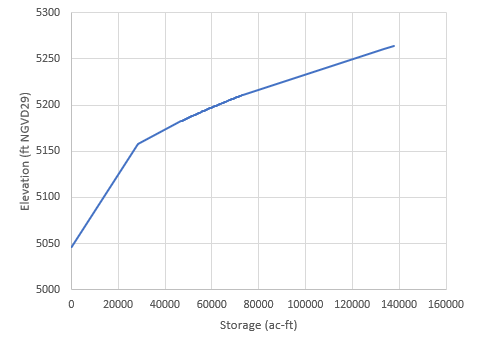
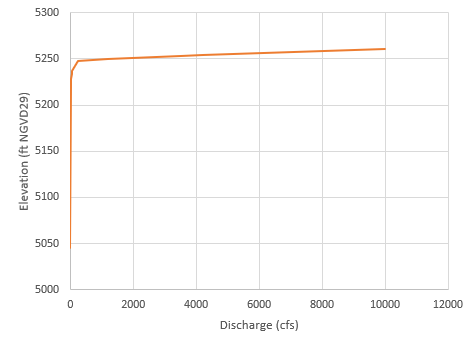
Stage/storage, outflow, and diverted flow from French Meadows Reservoir are recorded by the USGS and stored within the National Water Information System (NWIS). The location of the pool and outflow gages in relation to the study area are shown in the following figure. Typically, approximately 500 cfs is diverted from French Meadows Reservoir to the French Meadows Power Plant located south of the reservoir.
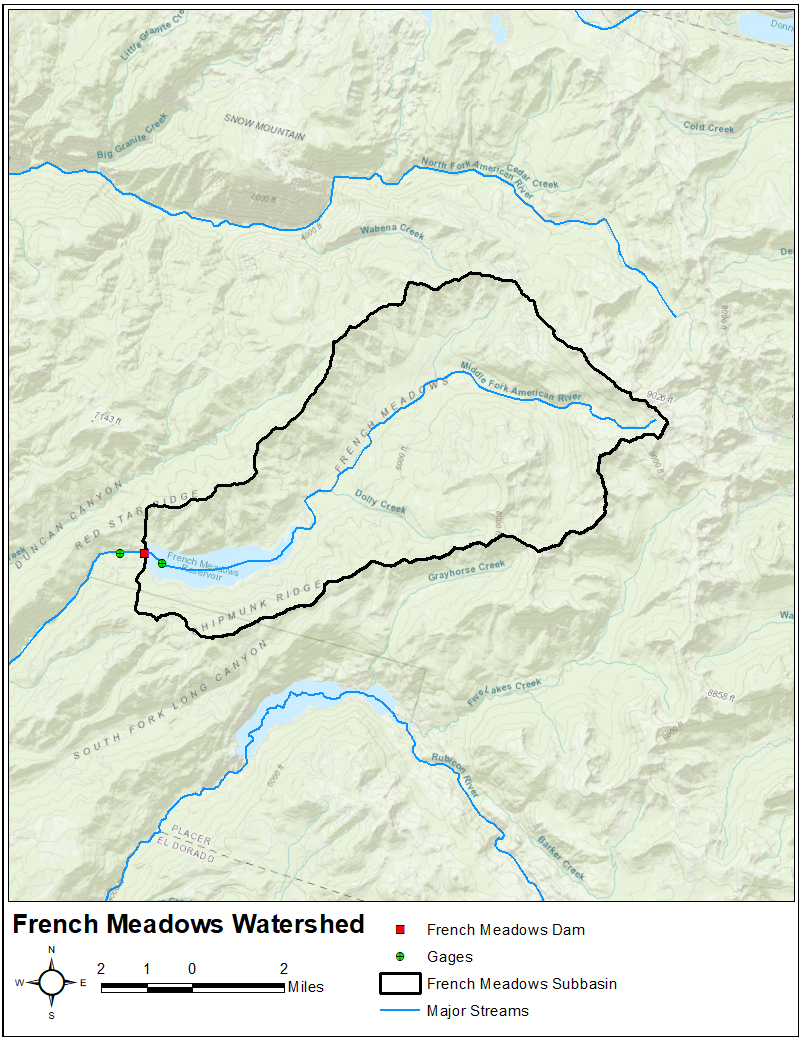
Daily average pool elevation, outflow, and diverted flow data was imported from NWIS using HEC-DSSVue. Daily average inflow to the French Meadows Reservoir was computed using change in storage, outflow, and diverted flow. The following figure shows the basin-average precipitation for the study area, observed pool elevation, and computed inflow for the French Meadows Reservoir for the simulation time period.
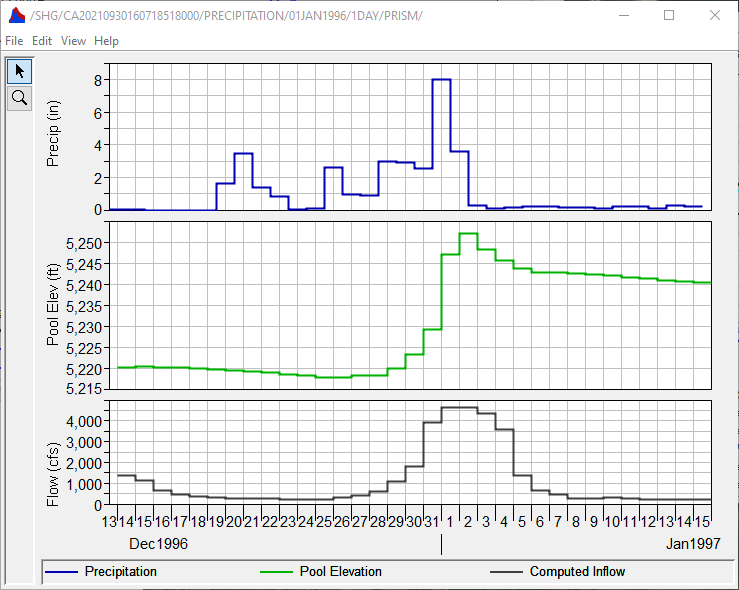
Model Configuration
An HEC-HMS project named "Deficit_Constant_Workshop" has already been created for you. This HEC-HMS project contains a basin model named "Dec_1996_Jan_1997", a meteorologic model named "GriddedData_1997", and a control specification named "Dec_1996_Jan_1997". As shown in the following figure, there is one subbasin element named "MF_American_Rv_S30" along with two junction elements named "French_Meadows_In" and "French_Meadows_Out", one reservoir element named "French_Meadows_Reservoir", one diversion element named "FrenchMeadows_PP_div", and one sink element named "to_FrenchMeadows_PP" within the existing basin model. This subbasin was originally delineated using terrain data downloaded from the USGS National Map Viewer.
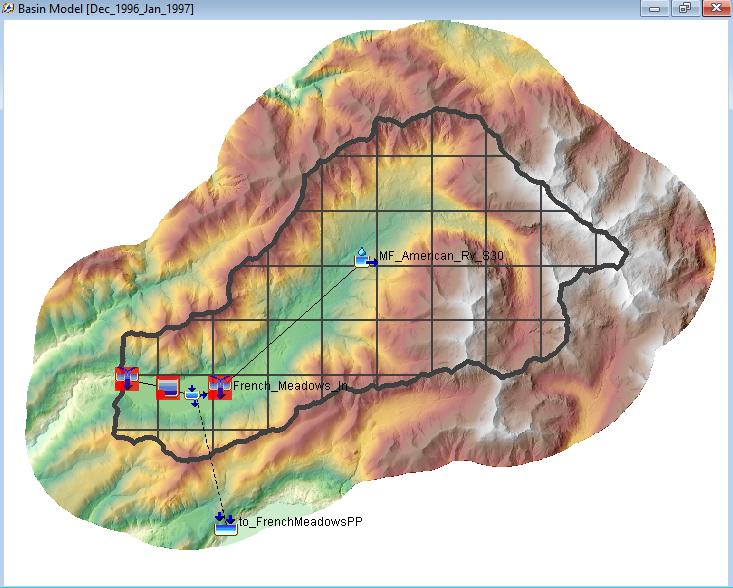
The subbasin element was configured to use a 2000-meter SHG Structured discretization, the Deficit and Constant loss method, the ModClark unit hydrograph transform method, and the Linear Reservoir baseflow method. The diversion element was configured to use the Specified Flow diversion method. The observed diversion time series was set as the diversion gage. The reservoir element was configured to use the Outflow Curve method. The previously-mentioned elevation-storage and storage-discharge relationships were selected. Finally, the previously-mentioned observed data records were linked to the appropriate elements.